
Gravity is an exercise habit formation app designed to help the young generation establish a regular exercise routine both during and beyond the pandemic. It provides a fun, interactive, and effective way for users to develop and maintain healthy exercise habits while building a sense of community.
In November 2022, I collaborated with three designers on this course-based project. Over the month, I wore several hats, serving as both a user researcher, interaction designer, and UI designer. In my role as a user researcher, I conducted research and gathered insights to better understand the needs of our target users. As an interaction designer, I focused on designing the user experience, ensuring that the app was intuitive, user-friendly, and engaging. I also played a key role as a UI designer, creating visually appealing design elements that aligned with our overall vision for the app. By working across multiple areas of the design process, I was able to bring a well-rounded perspective to the team and ensure that the final product met both user needs and business goals.

CHALLENGE
Our ambitions were to cultivate a healthy lifestyle and promote well-being among university students during the covid lockdown.
OUTCOME
Gravity provides a gamified and social approach to help people establish regular exercise habits through the matching mechanism and the 21-day progressive social interaction unlocking feature.
PROJECT BACKGROUND
University life is often associated with late nights, lack of exercise, and unhealthy eating habits. This lifestyle is further compounded by the challenges of the Covid-19 pandemic, which has led to increased isolation and limited opportunities for physical activity. As a result, university students are at risk of experiencing negative impacts on their mental and physical health.
In response to these challenges, our team chose to focus on Sustainable Development Goal 3 - Good Health and Well-being - for our project, which aims to promote healthy habits among university students.
DESIGN PROCESS
We applied the Revamped Double Diamond to tackle the challenge in four stages - Discovery, Definition, Development, and Delivery throughout the design process.

USER RESEARCH
There are many factors that affect the health and well-being of a college student, so our first design problem is the factor we should focus on.

Cultural probe
We employed the cultural probe technique to gather empathy data on the daily life of university students. This approach allowed us to gain a deeper understanding of the challenges and opportunities for healthy habits in the context of university life.
Our Cultural Probe Kit included diary cards, pens, and prompts for participants to observe, reflect, and self-report on their experiences related to daily routine, meals, steps, and exercise. Participants were also asked to take photos and create a vlog related to healthy or unhealthy habits. Ten participants engaged in this one-week data collection.
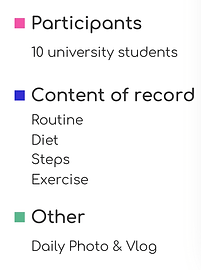
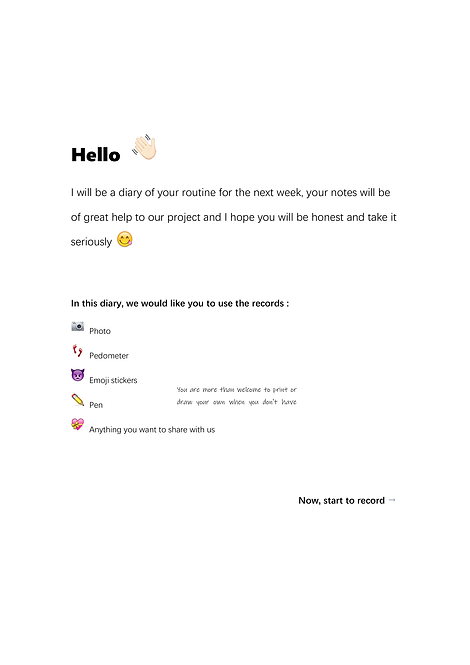
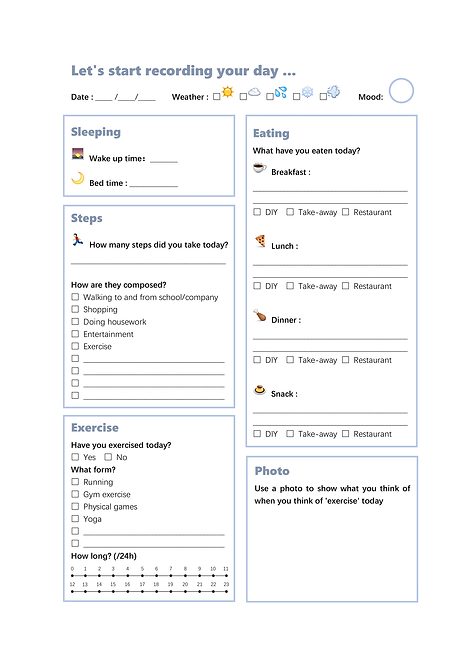
We identified two interesting findings from the results.
-
The 6 participants who regularly exercised had a more consistent daily routine and healthier eating habits compared to the other 4 participants who did not exercise regularly. Additionally, these participants rated themselves as being more in line with health standards.
-
When the participants took photographs related to health topics, sports and light exercise were heavily featured. This finding suggests that physical activity is an important aspect of how university students perceive and prioritize their health.
The findings from cultural probes helped us to focus our design objectives on developing and maintaining exercise habits among university students.
Semi-structured interview
To further understand their exercise habits and attitudes, we conducted in-depth semi-structured interviews with four typical users, including those with and without exercise habits.
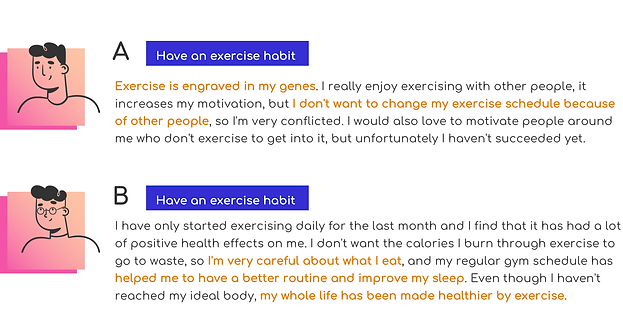
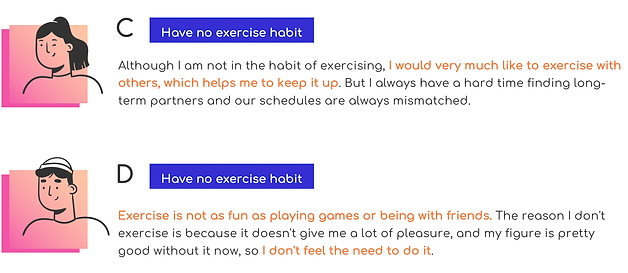
Through these interviews, we made 2 discoveries.
-
Those who already have exercise habits are reluctant to have their routine disrupted and often struggle to find exercise companions who share their level of commitment. On the other hand, those without exercise habits tend to find exercise tedious and challenging, particularly without the support of a workout buddy.
-
Gamified exercise makes it easier for users to stick with the exercise through encouragement and accomplishment.
Overall, our interviews revealed that the social and recreational aspects of exercise are essential factors in developing and maintaining healthy habits among university students.
Experimental test
To explore the most effective scenario for establishing exercise relationships among peers, we conducted a further user research study. Participants were paired up, with those who had exercise habits being assigned to the role of leaders to guide those without exercise habits through various forms of exercise via an experimental test. In consideration of the impact of Covid-19, we opted for an online format.
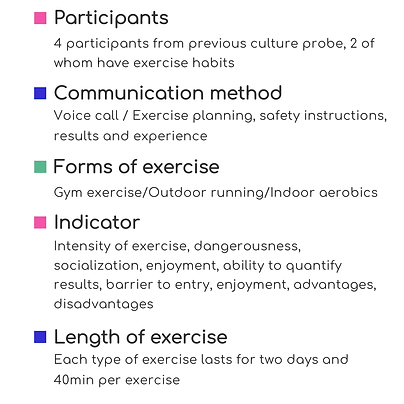
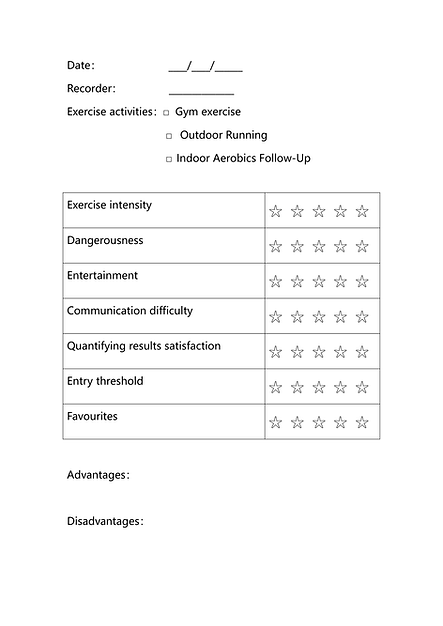
We compared 3 sports methods using radar charts.
-
The gym was deemed too intimidating for beginners, and leaders were not available for live coaching.
-
Indoor aerobics had both advantages and disadvantages, with gender differences in receptivity. However, the guidance leaders could provide was quite limited, and there was little interaction between participants.
-
Outdoor running had the lowest threshold, was not affected by Covid-19, and had benefits for people's mental health, although it lacked interactivity and fun.
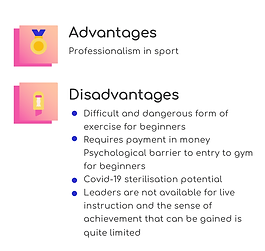
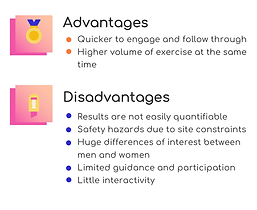
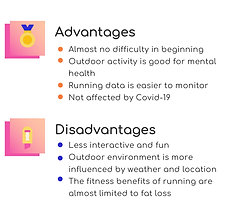
After analyzing both qualitative and quantitative results, we concluded that outdoor running is the most suitable way for exercising peers to develop exercise habits together during the Covid lockdown.
INSIGHTS
Empathy Map
To summarize the qualitative analysis results, we put our findings into the empathy map to illustrate user attitudes and behaviors.
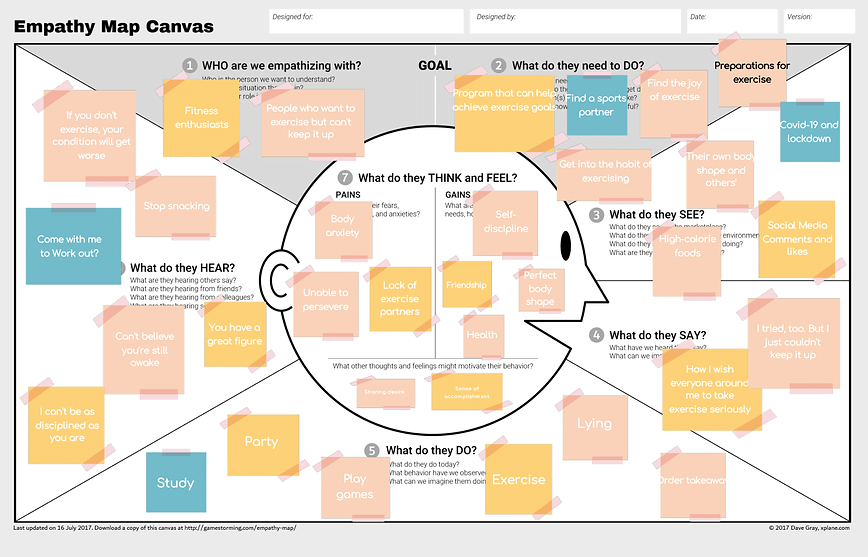
Persona
Then we created two typical Personas. One is the person with a long-term exercise habit and the other is not used to exercise.
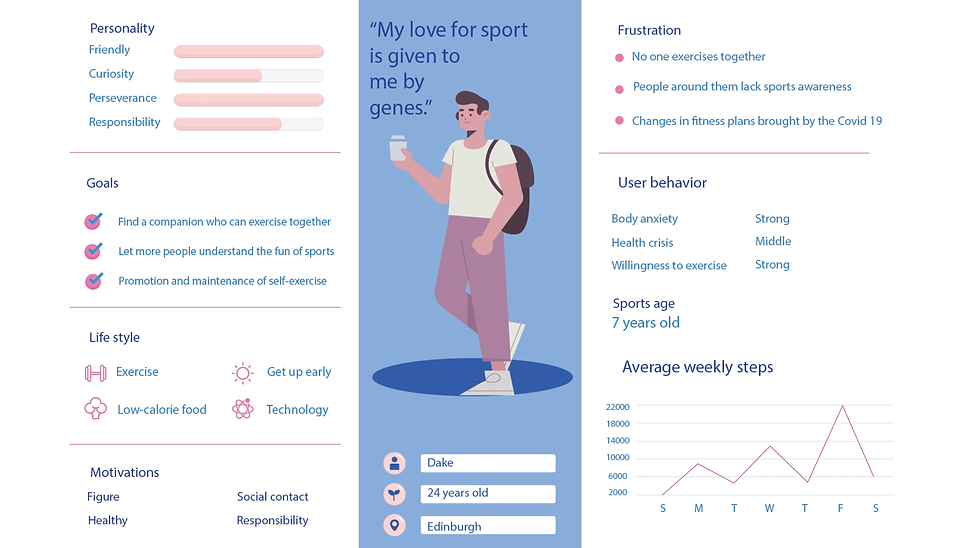
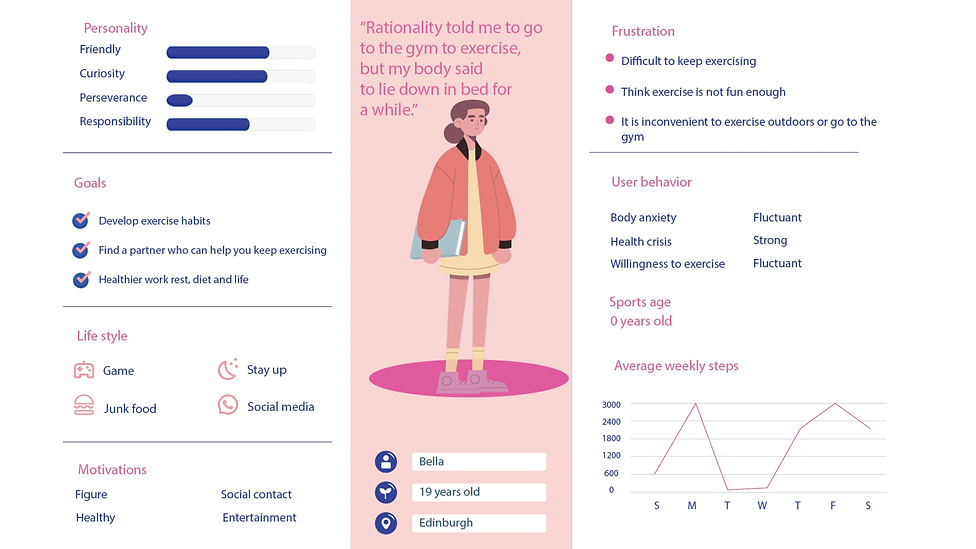
User Journey Map
We also created a User Journey Map to further understand the users' pain points at each stage during the exercise process and how their experience develops over time.
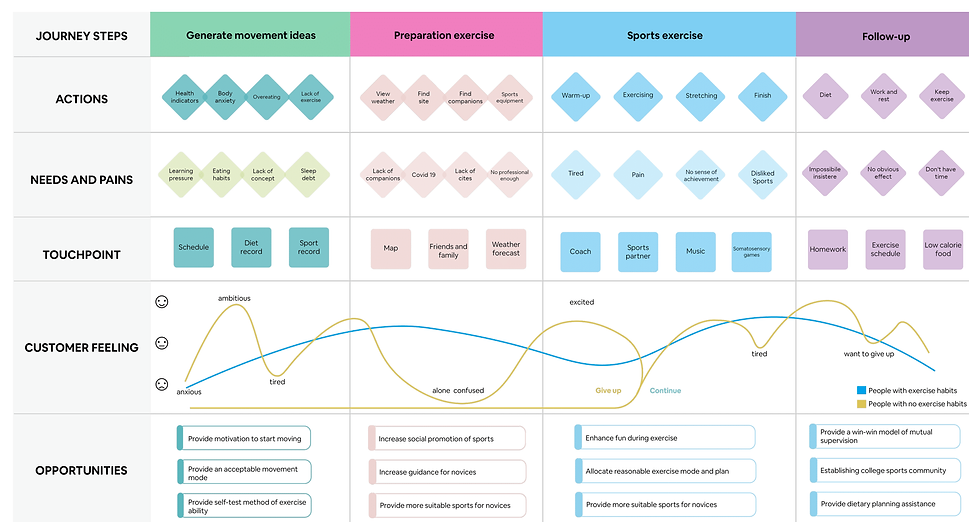
Design themes
Then, our interest lies in increasing physical activity, cultivating a healthy lifestyle, and promoting well-being among university students through the combined mechanisms of social networks and game incentives.
The specific issues we are considering are:
-
Apply gamification design to create a satisfying and fun experience for users when doing exercise
-
Establish social connections and collaborative networks among the users to reduce their psychological distancing and improve their mental health
-
Provide coherent and cohesive incentive mechanisms to motivate users to stick with physical activities, hence developing healthy exercise habits and lifestyles
COMPETITIVE ANALYSIS
To gain more insights into combining sports with gamification and socializing attributes, we analyzed 4 fitness apps with diversified product models. They include JoyRun (mainly for running users), Keep (with a focus on sports monitoring), Tinder (which has solid social attributes), and Fitness Ring Adventure (which combines sports and games). The SWOT analysis of these apps allowed us to learn how the major competitors work and identify potential opportunities to outperform them.

IDEATION
Brainstorm
In the Ideation phase, we brainstormed to stimulate idea generation. We proposed three draft ideas, respectively, characterized by socializing attributes, ink game, and the incentive system.
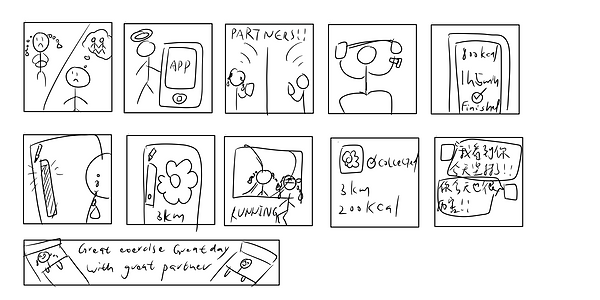
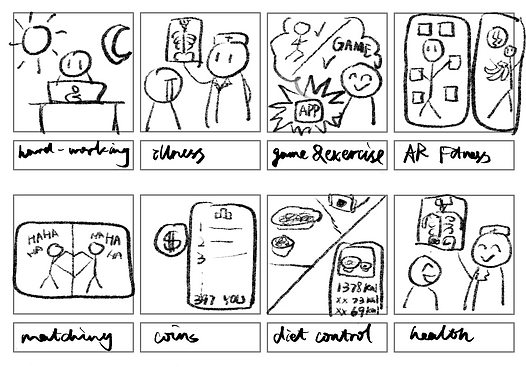
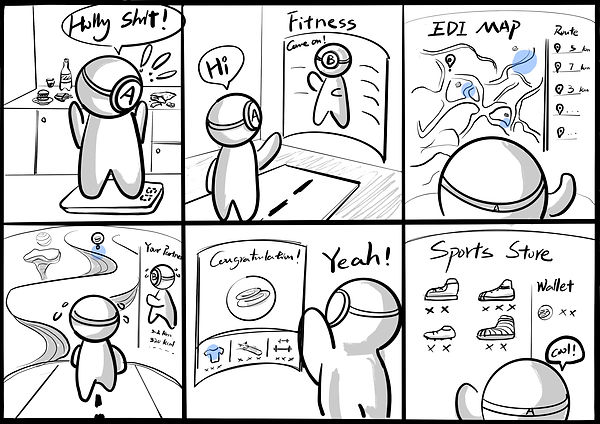
Storyboard
We integrated these concepts into one storyboard and created an App for university students to cultivate exercise habits through social and emotional connections.
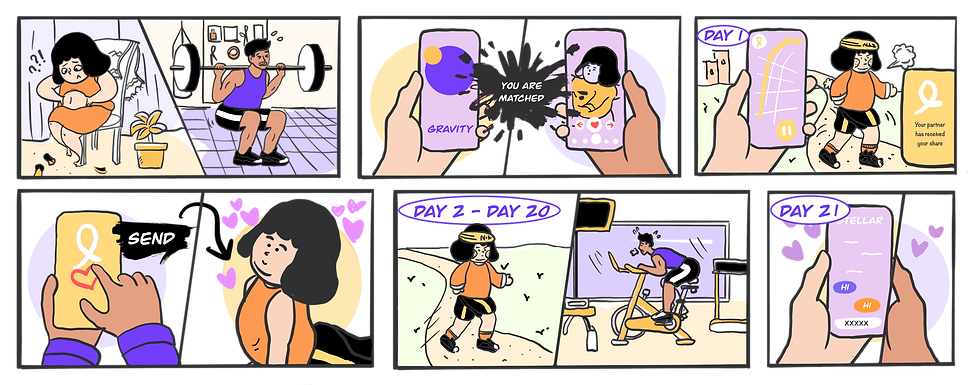
DELIVERY
Usability test
In the Delivery Phase, we decided to build an emotional connection through the socializing function of the sports app. We also set game tasks and honor incentives to motivate users to keep exercising for a long time. This way provides users with a sense of participation and belonging and promotes their emotional experience.
Based on this, we designed a low-fidelity interactive interface. Then, we conducted user prototyping to outline the user flow and test the usability and usefulness of its functionality.

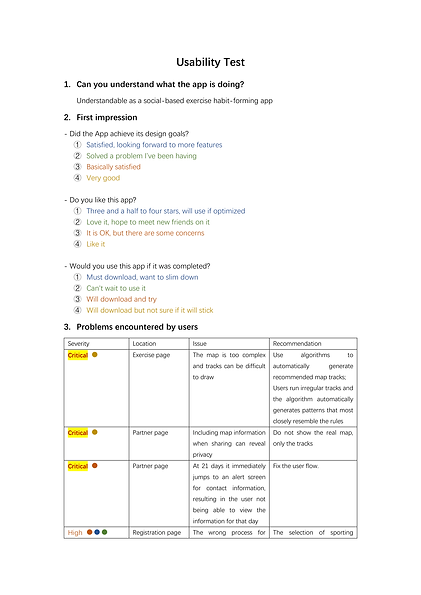

User flow
After collecting feedback from test user groups, we refined the interaction logic framework.
INTRODUCING GRAVITY
Gravity is an exercise habit formation app designed to help young people establish a healthier life during and beyond the Covid lockdown. It is a useful tool for anyone looking to establish a regular exercise routine and build strong connections with other like-minded individuals.
Exercise with a new friend
Gravity divides users into two categories: "stellar" and "planet," based on whether they already have an exercise habit or not. It matches one stellar with one planet, allowing them to exercise separately while the stellar supervises the planet's progress.
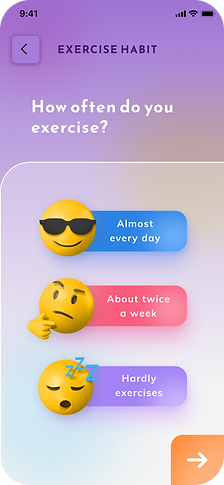


Find the gravity
The app incorporates socializing features to motivate users to exercise. Users who exercise regularly will be rewarded with a "happy face" badge, while those who don't will receive a "lazy ghost" badge displayed on their social square pages. By creating a sense of community and social pressure, Gravity makes exercise more engaging and fun, increasing the likelihood that users will develop and maintain healthy exercise habits.
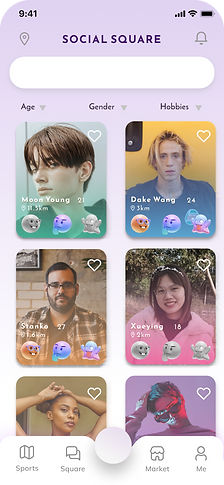
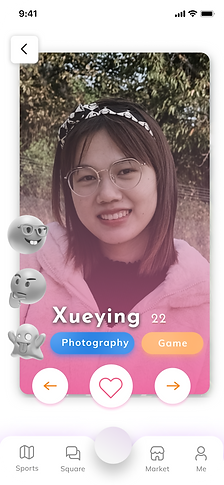
A journey of true friendship
The 21-day progressive social interaction unlocking feature in Gravity is designed to motivate users to exercise regularly using a gamification approach. The app's running system tracks the user's exercise progress, and if they exercise consistently for 21 days, they can unlock the social interaction function.
This function allows users to engage in social interaction under restraint.
-
co-create a running track through an ink game after finishing the exercise
-
share music after 7 days of consistent exercise
-
share photos after 14 days of consistent exercise
-
communicate with each other via text after 21 days of consistent exercise
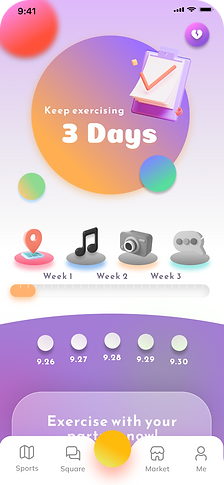

By providing a clean and friendly environment, we aim to encourage users who want to develop exercise habits and start new friendships through exercise. Additionally, we aim to create a community where users can find support and encouragement to maintain their exercise routines. This feature is especially helpful for those who find it difficult to exercise consistently on their own.

Exercise for fun
Gravity stimulates people to exercise through an ink game in the exercise system. Users simply draw their running routes on map, and the system will navigate them automatically. Partners can co-create a running track through exercise.